This homemade harissa recipe is surprisingly easy, and once you learn how to make it, you’ll find a million ways to use it in your cooking.
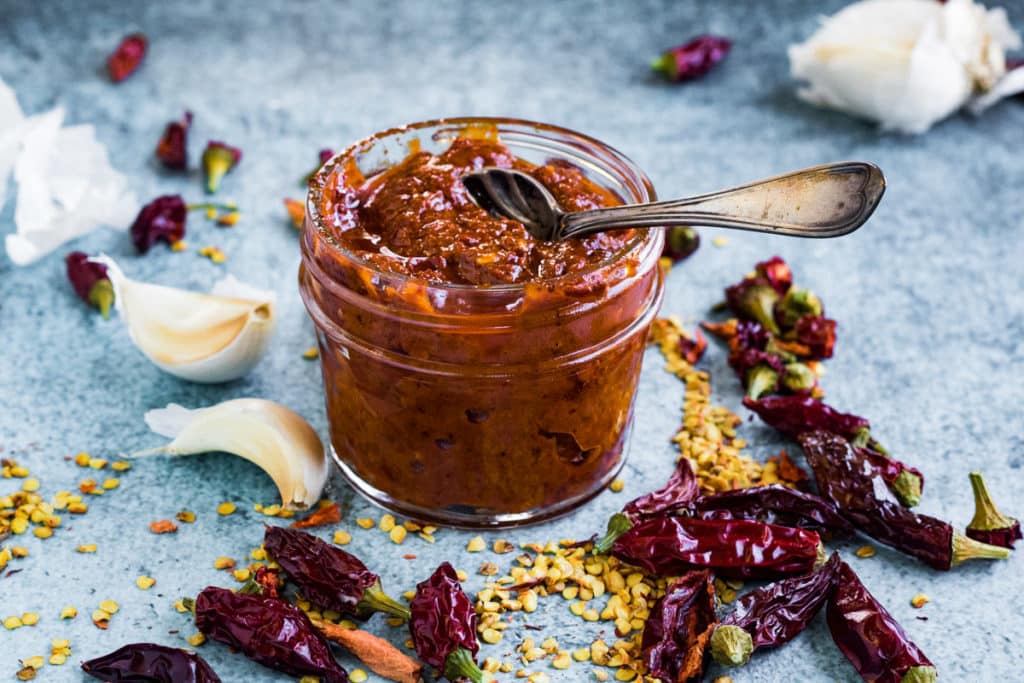
This post may contain affiliate links. As an Amazon Associate, I earn from qualifying purchases. See my Affiliate Disclosure.
Harissa is an intensely hot, complexly flavored Tunisian chile paste. It is having a moment, and it’s about time. I’ve been having my own steamy love affair with it for years.
If you’ve ever shared a meal with me, you know how much I love a bold kick of spice. I’m a hot sauce junkie, and I have favorites that vary by cuisine.
For Chinese, I’m all about a simple but hot chili paste or hot chili oil studded with tangy fermented black beans.
Korean food is best fortified with mouth-searing gochujang, the fermented chile paste the cuisine is famous for.
Mexican food—and just about any egg dish—begs for the pure chile heat of an unadulterated hot pepper sauce like Tapatio or my own Homemade Hot Sauce.
And Then There’s Harissa
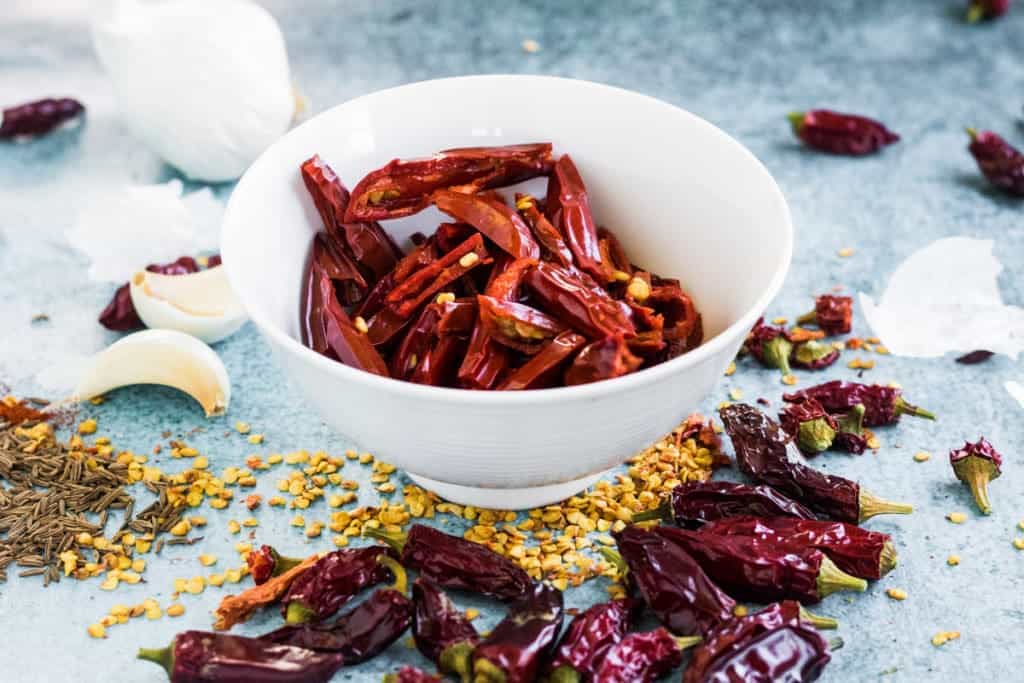
Harissa was born in North Africa and plays starring roles in virtually every cuisine of that region.
It delivers intense heat, and because it is made with raw garlic and toasted spices, its flavor is deeply complex. At its most basic, harissa paste combines sun-dried chiles, garlic, toasted and ground caraway and coriander seeds, and olive oil.
You’ll see variations that include everything from cumin, saffron, smoked paprika, or tomato paste to rose petals and/or rose water.
Lately harissa is popping everywhere—in marinades for meat and fish; as a condiment for couscous, roasted vegetables, lamb burgers, or falafel; or stirred into soups or stews.
And they even sell a version at Trader Joe’s. The TJ’s version is made in Tunisia and surprisingly tasty. But really, nothing beats homemade harissa. And by learning how to make harissa paste at home, you can customize the heat level and vary the other flavors however you like.
Keep a Jar of Homemade Harissa in Your Fridge
Ideally, homemade harissa should be refrigerated for a day or two before serving to give the flavors a chance to meld together and mellow a bit.
One of the things I love about this harissa recipe is that it lasts a long time—you can keep it, in a glass jar, for up to 3 months in the refrigerator.
It’s Versatile, Too
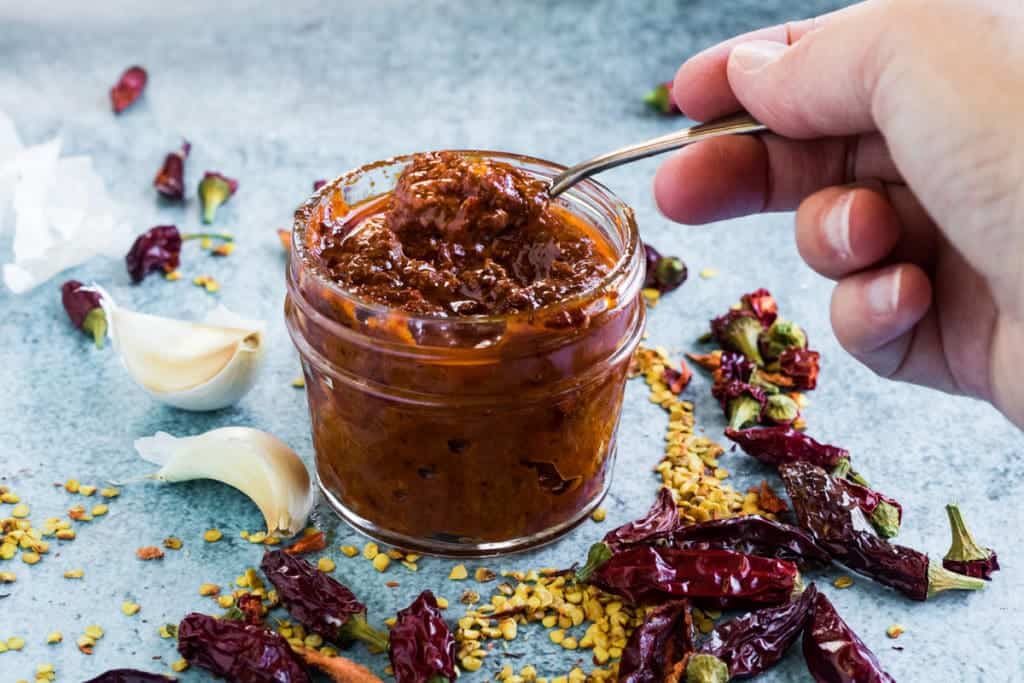
Since I created this harissa recipe, I’ve been using it to make Quick and Easy Harissa Chicken and Spicy Harissa Dressing. The possibilities are endless:
- Spread it on burgers
- Spice up a falafel or hummus sandwich
- Use it as a dip for Homemade Pita Bread
- Spread it on fish or meat as a marinade
- Stir it into plain yogurt or mayonnaise for a creamy and spicy dipping sauce
- Dollop it onto couscous
- Thin it with additional olive oil and use it as a finishing sauce
Dolloped on my breakfast eggs, it even gives Tapatio a run for its money.
More Jewish holiday recipes you’ll love
- Honey Cake
- Honey Cookies
- Lemon Coconut Macaroons
- Jewish Beef Brisket
- Meat-Filled Borekas or Pastelicos
- Passover Orange Sponge Cake
- Passover Potato, Tomato, and Olive Stew
- Hamentashen
- Kreplach with Beef Filling
- Sufganiyot or Jelly Donuts for Hanukkah
- Potato Latkes for Hanukkah
- Classic Chopped Liver
- Vegetarian Chopped Liver
- Check out all of my Jewish Recipes!
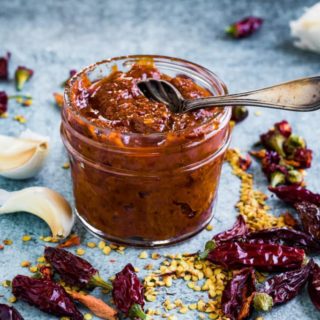
Classic Tunisian Harissa Paste
Ingredients
- 1 cup dried red chiles stems, seeds, and ribs removed
- 1 teaspoon caraway seeds
- 1/2 teaspoon coriander seeds
- 1 small garlic clove
- 2 tablespoons paprika
- 1 teaspoon kosher salt
- 1/4 cup olive oil plus additional if needed
Instructions
- In a small, heat-safe bowl, cover the chiles with very hot water and let stand for 5 minutes. Drain the chiles, discarding the soaking liquid.
- Heat a small skillet over medium-high heat and toast the caraway and coriander seeds, shaking the pan occasionally, until they begin to pop and become aromatic, about 1 minute. Remove the seeds from the hot pan immediately and grind them in a spice grinder or with a mortar and pestle.
- Transfer the chiles to a blender or food processor and add the garlic, ground spices, paprika, salt, and olive oil. Puree to a paste.
- Transfer to a clean jar and store, covered, in the refrigerator for up to 3 months.
Notes
- I highly recommend that you wear gloves when you are handling the dried chilies to remove the stems and seeds. I use disposable nitrile gloves (the kind used for medical exams). I buy them in boxes of 200 for around $15.
- Harissa paste will keep, in a tightly covered jar in the refrigerator, for up to 3 months.
Nutrition
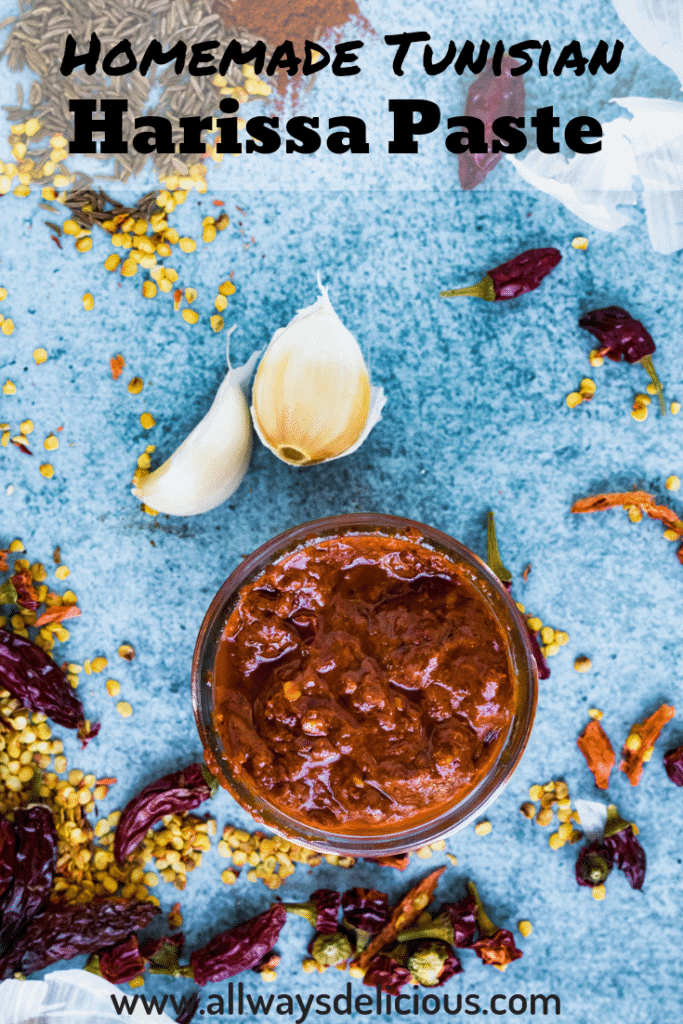
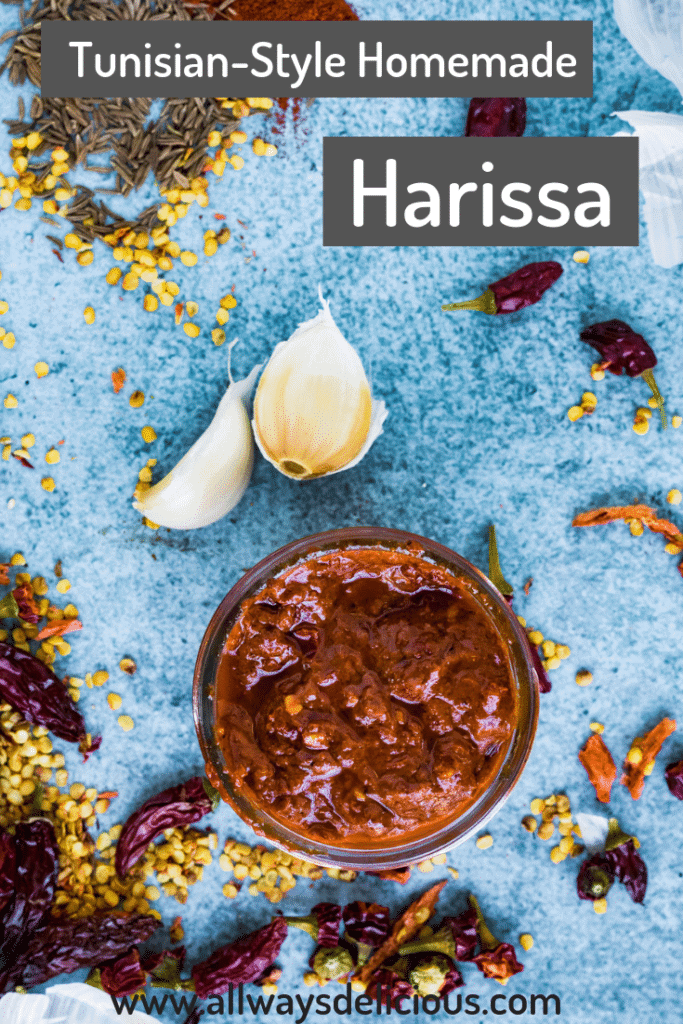



2 thoughts on “How to Make Harissa Paste—Super Easy Recipe”